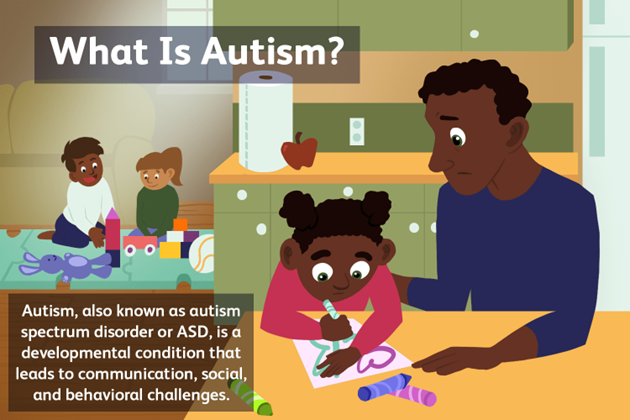The nurse is collecting data on an 18-month-old child with a diagnosis of autism spectrum disorder (ASD).
What clinical manifestation would likely have been noted in the child with this diagnosis?
The child does not make eye contact.
The child sits quietly in the caregiver's lap during the interview.
The child smiles when the caregiver shows her a stuffed animal.
The child cries and runs to the door when the caregiver leaves the room.
The Correct Answer is A
One of the common symptoms of autism spectrum disorder (ASD) is difficulty with social communication and interaction, which can include avoiding or not keeping eye contact.

Choice B is not an answer because sitting quietly in the caregiver’s lap during the interview is not a typical symptom of ASD.
Choice C is not an answer because smiling when shown a stuffed animal is not a typical symptom of ASD.
Choice D is not an answer because crying and running to the door when the caregiver leaves the room is not typical symptom of ASD.
Nursing Test Bank
Naxlex Comprehensive Predictor Exams
Related Questions
Correct Answer is C
Explanation
Elevating the head of the bed can help to reduce pressure on the cervical spine and promote comfort for the client.
Choice A is not correct because a pelvic girdle is not used with halo traction.
Choice B is not correct because placing the client in a supine position can increase pressure on the cervical spine.
Choice D is not correct because elevating the foot of the bed would not provide any benefit for a client in halo traction.
Correct Answer is D
Explanation
True labor contractions continue and become stronger over time.
Choice A is incorrect because true labor contractions are usually regular and become longer over time.
Choice B is incorrect because true labor contractions are usually not relieved by walking.
Choice C is incorrect because, during true labor, the cervix dilates to allow for the baby to pass through the birth canal.
Whether you are a student looking to ace your exams or a practicing nurse seeking to enhance your expertise , our nursing education contents will empower you with the confidence and competence to make a difference in the lives of patients and become a respected leader in the healthcare field.
Visit Naxlex, invest in your future and unlock endless possibilities with our unparalleled nursing education contents today
Report Wrong Answer on the Current Question
Do you disagree with the answer? If yes, what is your expected answer? Explain.
Kindly be descriptive with the issue you are facing.
